Have you ever found yourself digging through stacks of crumpled client notes and spreadsheets, desperately trying to piece together your latest project?
If this sounds a bit too familiar, you’re probably struggling to keep track of client information.
Information gathering is a common issue for small businesses in many niches, from accounting and SaaS to web design and law firms. But there are ways to streamline your data management procedures so that you can spend less time chasing information and complete projects on time.
In this post, we’ll show you:
- Types of client information you should be tracking to make your life easier
- Practical tips for tracking client information
- Some of the best tools for data management
Let’s dive in!
Types of client data you should be tracking
Businesses can learn a lot about their clients through countless interactions. This knowledge deserves to be stored and managed in a well-structured way because it can help you improve products or provide better services to your clients.
Here’s what you should keep an eye on:
- Company information (location, size, number of employees, ownership structure, etc.)
- Contact and billing information
- Purchase history and services delivered
- Contract details and communication preferences
- Customer support history (services requested/delivered, issue descriptions, etc.)
- Communication history (meeting and call records, email communication)
- Sales and marketing data
- Client feedback (from surveys, questionnaires, reviews, direct conversations)
- Legal agreements or contracts
- Client preferences (specific product features, suggestions, and/or complaints)
The list goes on — you are free to save other information that leads to a successful client management.
Practical tips for tracking client information
Client management gets easier if you follow a few basic principles. These tips will help you stay organized:
1. Keep your data updated
How often do you check and update client details? If the answer is ‘never’, rest assured you’ll be working with outdated and inaccurate data sooner or later. Keeping your client information updated is a must, and here’s how to do it:
- Spend some time each month or quarter to review and update client records
- Take advantage of tools that automatically validate client information
- Encourage clients to provide feedback, so you can keep data accurate (and show extra commitment)
2. Pay attention and document the details

Another useful tip is to document every major interaction with a client — meetings, emails, and phone calls. That way, you’ll figure out what motivates your clients and tailor your services accordingly. In addition, this will keep you prepared for every possible scenario if something goes wrong.
3. Build a security protocol to protect client information
Protecting client information is as crucial as tracking it effectively. One way to do that is to encrypt data both in transit and at rest in order to safeguard sensitive information from potential breaches.
You should restrict access to client data, allowing only authorized personnel to view and modify it. It’s also important to run regular security audits to identify vulnerabilities.
4. Use technology to your advantage
You can hardly build successful client relationships without a data management tool. These come in many forms, including document collection platforms, customer relationship management (CRM) platforms and client portals.
These tools enable you to centralize client information, automate data entry, keep track of clients, and streamline communication, but more on that in the next section.
Some of the best online tools to manage client information
You can collect and manage client data using everything from traditional tools like Excel to robust customer relationship management platforms. But which ones are the best?
It’s a tough question without a straightforward answer, but we’ll discuss some of our favorites.
Client portal for gathering files and information: Content Snare
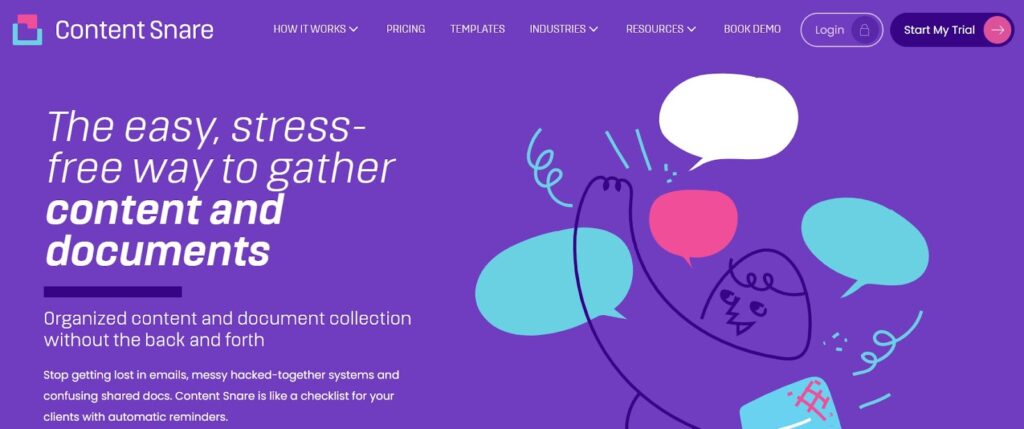
Content Snare is the simplest way to collect documents, data, and content from your clients. Our platform streamlines information gathering thanks to a range of practical features such as automated reminders and ready-made templates.
Instead of using multiple platforms to gather information — emails, shared docs, and messy software solutions — you can centralize the process with just one tool. Content Snare lets you start conversations directly within your online forms, making it easy to clarify your request:

But that’s just the tip of the iceberg. Content Snare gives you many other ways to improve content and data collection. Some of the main advantages of using our tool include:
- Simple requests with all questions types you can think of
- Auto-saving captures all information even if your clients abandon the form without saving their inputs
- You can approve inputs or ask for revisions — no emails needed
- Control who can view your forms or edit them
- Effortless data exports
- Dozens of customizable templates for accounting practices, digital agencies, law firms, and many other types of businesses
Stop chasing clients for content and documents
Content Snare revolutionizes the way you gather information and documents. Turn a tangled mess into a smooth process that boosts efficiency and frees up your time.
Customer relationship management: Hubspot
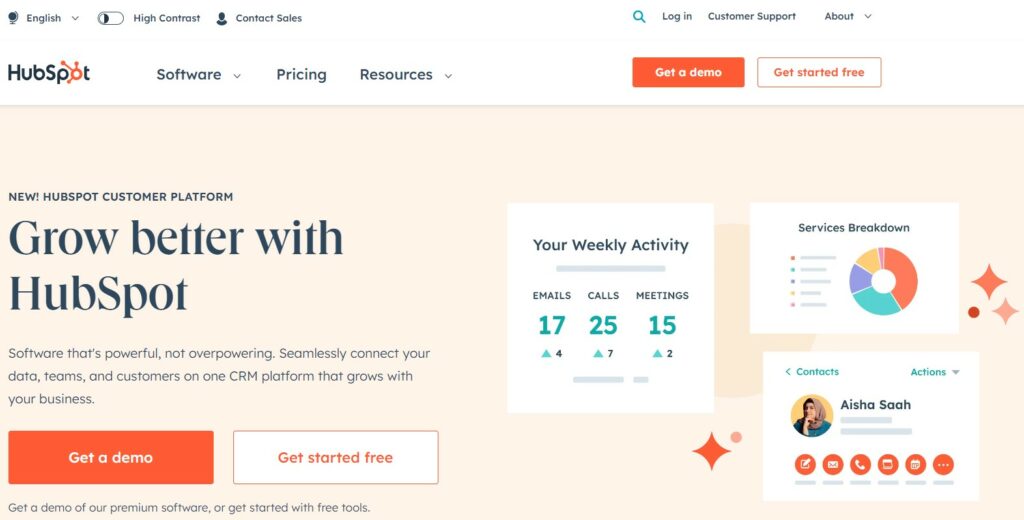
Hubspot offers a comprehensive suite of tools that cover every aspect of client management, from contact information and communication history to lead nurturing and analytics. This all-in-one approach means you can streamline your workflow without investing in multiple software solutions.
The thing we like the most about Hubspot is its scalability. It's suitable for small business owners who can easily expand their usage as their client base evolves. Other benefits of this CRM system include:
- Lots of automation features
- A nice set of free tools for small teams
- Advanced data analytics
Related: How to choose the best CRM for web designers
Time tracking and invoicing: Clockify
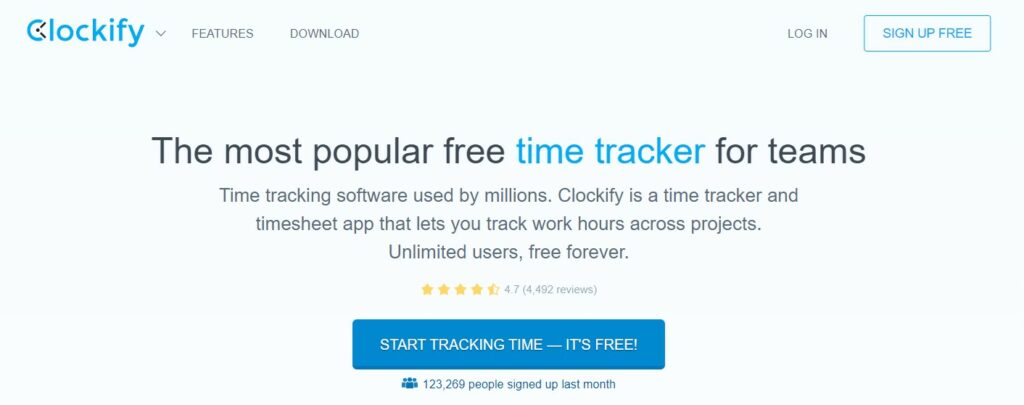
Keeping tabs on client interactions and project progress can be a tricky juggling act without the right tool. Clockify is one of the best solutions in this field, as it offers an array of features to improve your client management procedures.
What’s best, Clockify is a very affordable tool — its Pro plan costs less than $100 per year. This plan gives you important features such as:
- Forecasts
- Labor cost and profit
- Alerts
- Email reports and expense analysis
Related: Time tracking for accountants: Top 7 software solutions
Scheduling: Calendly
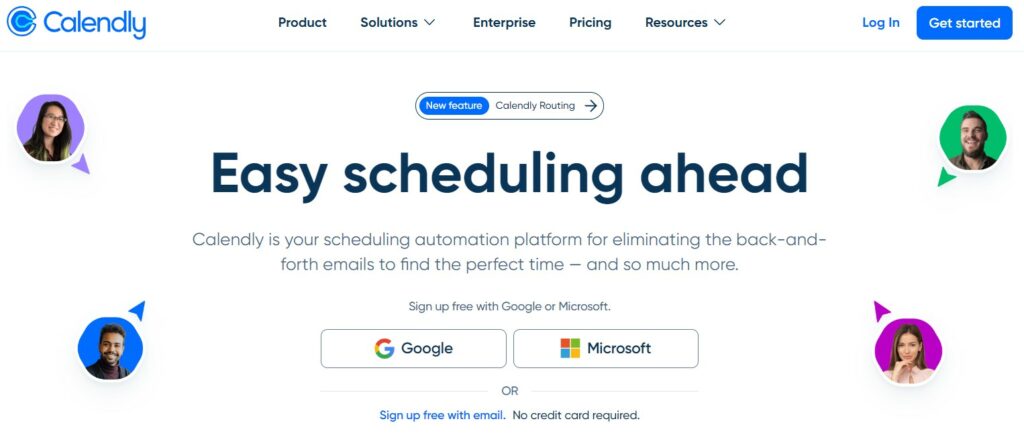
Calendly is yet another tool that can help you keep track of clients and their data. It’s an innovative scheduling system that makes it easier to book meetings or calls. You just need to set up your availability, choose a meeting type, and share a scheduling link with clients.
That way, Calendly eliminates back-and-forth emails or phone calls that can eat up valuable time or leave both parties underprepared. It also gives you additional perks like:
- Hundreds of third-party integrations
- Automated workflows with custom reminders
- Advanced scheduling based on multiple calendars (business and private)
Task management: Todoist

Todoist is a popular task management tool, mainly thanks to its robust features and cross-platform compatibility. The platform is very simple, so you can quickly start creating, organizing, and managing tasks without a steep learning curve.
Todoist focuses on prioritization through priority labels, so you can get the most critical client-related actions done promptly. In addition, the platform offers other benefits:
- Sections and subtasks
- Task descriptions to keep track of your clients’ requirements
- Task labels for simpler categorization and filtering
No-code automation and integration: Zapier
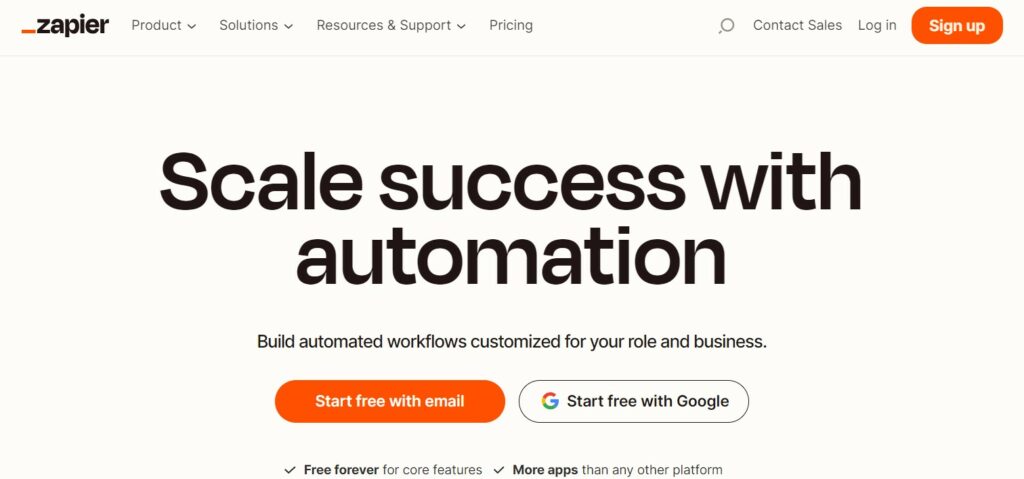
Zapier is an online automation tool that connects pretty much all of your favorite apps like CRM systems, email platforms, or project management tools. That way, it helps you integrate data and automate repetitive tasks like task updates.
Zapier developed a unique "zap" feature that creates automated workflows by connecting different apps based on triggering actions. The most important benefits of using this tool include:
- Effortless integration of multiple systems that powers a more harmonious data management
- Tailored triggers that automatically capture and transfer data the way you want
- Zero coding knowledge required
Related: Do more with Content Snare integrations
Streamline client relationships through data management
Keeping track of client-related information is vital for your business because it helps you complete projects on time and build successful relationships.
The good thing is that you can automate most of these tasks by using a dedicated information gathering tool like Content Snare. This lets you keep clients information in one place and eliminate annoying back-and-forth emails.
We showed you some of our favorites, but now it’s your turn to step up. Pick the right data management system and you’ll streamline client relationships in no time.



